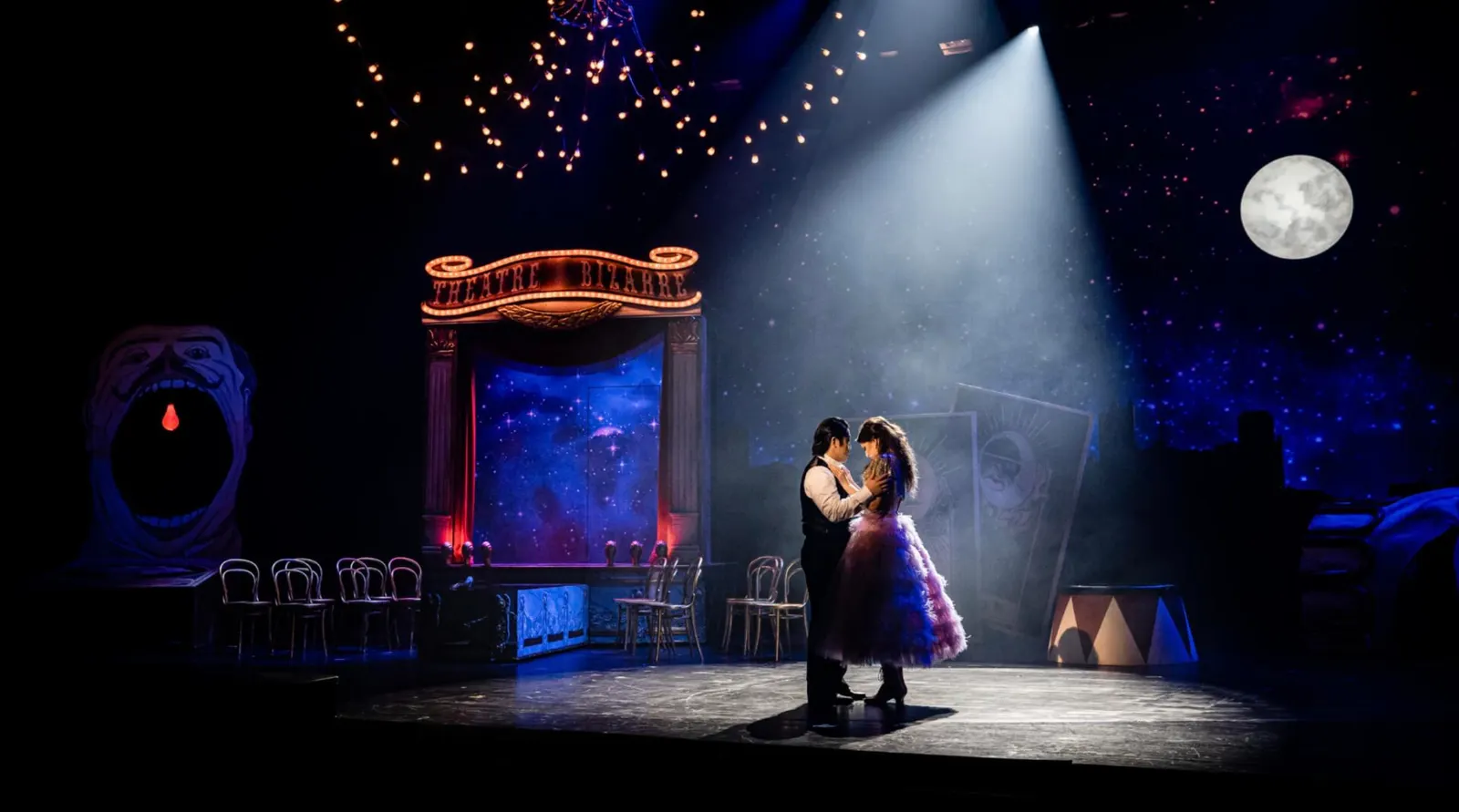By Contributor,Tiffany Leigh,William Shakespeare
Copyright forbes

Roméo et Juliette at Malmö Opera, 2023.
Jonas Persson
A Timeless Tale of Love and Loss
The Canadian Opera Company (COC) ushers in its 2025/2026 season with a dazzle of song and spectacle through its inaugural production of Roméo et Juliette.
Contrary to popular belief, the tale was not conceived by William Shakespeare in the late 1500s through his play. In fact, the author was actually inspired by Matteo Bandello’s 16th century Italian novella. Both shared a similar narrative about warring families, two star-crossed lovers, and the tragic death that befell them. In the 1860s, the story was reworked again by Jules Barbier and Michel Carre then emboldened by Charles Gounod’s now iconic score.
Naturally, this story has experienced several artistic iterations over the centuries gracing stage and film—everything from adaptations such as Prokofiev’s ballet in 1935 to Zeffirelli’s movie in 1968 starring Olivia Hussey and Leonard Whiting (the director stayed true to the source material). In more contemporary circumstances, we saw the tragedy told through the lens of director Baz Luhrmann in the 1990s starring Leonardo DiCaprio and Claire Danes where more creative liberties were taken.
Setting The Stage for a Refreshed Artistic Vision
Fast forward to this season’s new production at the COC (originally conceived by Malmö Opera) and spearheaded by Director Amy Lane. In honoring Gounod’s score, she has transported the viewer through time and space, and whose backdrop is now the Gilded Age in New York. Her long term collaborator, Costume & Set Designer Emma Ryott, opted for this period without hesitation, “we didn’t want to take the audience back to (the ever popular) Verona and the Shakespearian era… we found that this stretch of time was the perfect ‘vehicle’ for the warring families,” she explained on the opening night’s show of Roméo et Juliette at the COC.
“New York in the 1900s at this time was very exciting because in reality, there was a huge amount of immigration coming in. So it was perfect for our story…our idea is that it’s the established New York society (as manifested by the Capulets, depicted here as well-to-do UK and/or Dutch families and their posh parties) and the Montagues who were more likely the Italian immigrants,” says Ryott. It is what compelled the team to frame these beloved characters in a different context but still made sense thematically.
MORE FOR YOU
Stephen Costello as Roméo and Kseniia Proshina as Juliette in the Canadian Opera Company’s production of Roméo et Juliette, 2025
Michael Cooper
Storytelling through Costuming
Certainly, the cast and their vocal talents are undeniable with Stephen Costello as Roméo and Ksenila Proshina as Juliette—but arguably—it’s the costumes that speak volumes in the opening act (and before anyone utters a word). The whole ensemble dazzles in circus attire—resplendent in its exotic intrigue—a historic snapshot of when circus performers such as Barnum and Bailey and The Ringling Brothers captured the hearts and minds of all who sat inside those billowing top tent performances.
The opening theatrical number was a chance for Ryott to ‘play in the proverbial opera sandbox’. It not only set the tone for this production but echoes the palpable excitement for the remainder of COC’s season. It was also a chance for Ryott and her team to showcase the opera’s dynamism through the sets, garments, and accessories.
“There’s a lot of research materials we poured through… there was no shortage of it… we looked at all the shapes and silhouettes from that period and then we kind of superannuated them slightly,” per Ryott—in reference to refining the looks based on practical considerations of the cast (e.g. breathability, movement, ease of wardrobe changes). Ultimately she sought a balance…“the first half of the opera is very colorful and fantasy-driven (because they’re hosting a themed party), but the rest of it is more muted (in color palette) to bring us back to reality,”explains Ryott.
Roméo et Juliette at Malmö Opera, 2023.
Jonas Persson
Sartorial balance is key and the difference between broadway versus the opera
In the beginning, Ryott asserts that she went ‘full-on sparkly and opulent’—“but within reason… there’s a fine line between that and going into a ‘show business’ aesthetic,” she explains. Also keeping in mind the context that she was stepping into the mindset of Count Capulet (Juliette’s father and played by Mark Stone) and considerations he would be making for such a splashy affair. She has a few favorite looks from this opening sequence, “the Buzzy bee (for its whimsy)… and the chorus dancers because their looks were aligned with those circus act looks of yore featuring embellishments like stripes, corsets, and tutus. I also really loved Juliette’s dress and it being adorned with the feathers and sequins,” she says. Ryott also had some cheeky-fun with the Ringmaster, “he has a seedy backstory where he’s essentially the mafia with his henchmen and nightclubs,” and so she ensured he dressed the part—complete with scandalous strip-tease on-stage.
(centre) Alex Hetherington as Stéphano and Justin Welsh as Gregorio in Canadian Opera Company’s production of Roméo et Juliette, 2025
Michael Cooper
When the story gets darker, the tone is not only more vocally dire but the wardrobe shifts dramatically to mirror the characters’s respective day-to-day lives and the their reality, “we’re dealing with real people… it’s not a fantasy anymore. So we wanted to honor looks from that timeframe. The Capulets are in Bowler (Derby) hats and the Montagues are in their ‘Sunday Best’ attire, with three-piece and well-tailored Borsalino suits. It’s not extravagant as what we see in the first acts but more sartorially accurate,” explains Ryott.
After Romeo’s exile, Juliette’s wedding gown is also a symbolic manifestation of her suffering, “she’s dressed on-stage by her handmaidens but the neckline is intentionally high and the bodice is structured almost like a straightjacket to underscore the story at this juncture,” says Ryott in referencing Romeo’s absence and Juliette being forced to marry Count Paris, per her deceased cousin Tybalt’s (played by Owen McCausland) wishes.
Kseniia Proshina as Juliette (centre) in the Canadian Opera Company’s production of Roméo et Juliette, 2025
Michael Cooper
There is a macabre majesty in these final scenes to admire that make a call-back to the opening party scene. The handmaidens are dressed in a riff-off of a redcoat (from the British army), but here it’s black as night and the ribcage is glimmering, “oh yes, those were great, made out of gold leather and sequins… some even have eyeballs stitched on to the dresses,” she adds as a fun easter-egg for those sitting close to the stage. The garments also more technical than they let on, “they’re light, strong, and durable… made out of moldable (fiberglass) fabric… the same material you’d use to cast a broken arm with,” she explains.
A Lush Tale That Lingers
With the timeline shifts, ultimately the thoughtful changes are what keeps this opera full of visual twists and vocal appeal.
There are seven performances for Roméo et Juliette:
September 27, October 5 (2 p.m.), 8, 10, 14, 16, 18 (4:30 p.m.), 2025.
All performances begin at 7:30 p.m., unless otherwise indicated.
Visit the Canadian Opera Company’s website for more information.
Editorial StandardsReprints & Permissions



